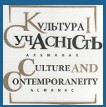TRANSFORMATION OF CONTENT AND IMAGE IN CHINESE ADVERTISING POSTER OF THE TWENTIETH CENTURY
TRANSFORMATION OF CONTENT AND IMAGE IN CHINESE ADVERTISING POSTER OF THE TWENTIETH CENTURY
Author(s): Zeqian WangSubject(s): Political history, Recent History (1900 till today), Politics and communication, Marketing / Advertising
Published by: Національна академія керівних кадрів культури і мистецтв
Keywords: China; advertising poster; propaganda; ideological influence; commercial advertising; image; content;
Summary/Abstract: The purpose of the article is to analyse and reveal the changes that took place in the Chinese advertising poster during the twentieth century. The work aims to establish the links between the cultural and political context and the figurative and semantic content of messages in advertising posters. The research methodology involves the use of general scientific and special methods. Historical analysis is used to understand the historical and cultural processes of the twentieth century and their impact on the development of advertising posters in different periods. Content analysis is used to analyse the content and images of advertising posters of different periods and to identify the main themes and ideas they express. Semiotic analysis is used to study signs and symbols in advertising posters; comparative analysis to identify the content and visual differences of advertising posters during the twentieth century. The scientific novelty of the work lies in the identification of differences in the content and images of Chinese advertising posters in different periods of the political history of China in the twentieth century. The interaction between the images of ideological messages of political and social propaganda and commercial advertising is traced. Conclusions. It has been found that the twentieth-century advertising poster is an important component of China's cultural and historical heritage and reflects changes in the country's political, social and cultural context. It is shown that advertising posters used as a means of propaganda in different periods of the twentieth century became less ideological and more focused on the commercial promotion of goods and services over time. The figurative and semantic characteristics and graphic language of the advertising poster have also undergone changes, and hybridisation in the formation of the advertising image, based on the principles of propaganda iconography and new marketing standards in commercial advertisements of the 1980s and 1990s, gradually gave way to new visual advertising forms.
Journal: Культура і сучасність
- Issue Year: 2023
- Issue No: 1
- Page Range: 88-92
- Page Count: 5
- Language: English

